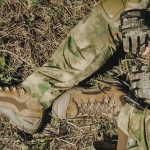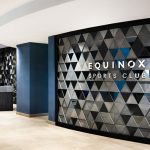Samsonite reported that its outdoor brands, Gregory and High Sierra both registered steep declines in sales in the first half ended June 30 with the decline in tourism affecting all the company’s brands.
Net sales of the Gregory brand decreased by 30.8 percent (-30.9 percent constant-currency) to 24.1 from 34.9 million a year ago. Net sales of the High Sierra brand decreased by 62.5 percent (-62.1 percent constant-currency) to $14.7 million from $39.3 million in the previous year.
Overall, Samsonite’s first half 2020 net sales decreased by 54.3 percent to $802.3 million. The company said the impact of COVID-19 on the company’s business has been significant due to temporary closures of retail stores in which the company’s products are sold and significant reductions in travel and discretionary spending among consumers which have reduced demand for its products.
The company incurred restructuring charges of $28.8 million which primarily consisted of severance associated with permanent headcount reductions and store closure costs as the company took actions to reduce its fixed cost base in response to the impact of COVID-19.
During the six months ended June 30, 2019, the company recorded costs related to profit improvement initiatives included in Other Expenses totaling $9.8 million which positioned the business for stronger profitability in the second half of 2019 and into 2020 before the pandemic.
Samsonite incurred a loss attributable to the equity holders of $974.0 million for the six months compared to a profit of $49.1 million for the same period in the previous year. The Group incurred a loss attributable to the equity holders of $169.7 million when excluding the 1H 2020 Impairment Charges and 1H 2020 Restructuring Charges, both of which are net of the related tax impact, incurred during the six months ended June 30, 2020. The year-on-year decrease in profit attributable to the equity holders was primarily due to the negative impacts of COVID-19.
In a statement, Kyle Francis Gendreau, CEO, said, “The COVID-19 pandemic and various government measures, including travel restrictions and mandatory lockdowns, have resulted in an estimated 98 percent decline in international tourist arrivals in May 2020, and an estimated 56 percent decrease during the first five months of 2020, year-on-year. This has had a significant impact on customer demand for the Group’s products. Compounded by the temporary closure of most of the Group’s retail and wholesale points-of-sale globally, the Group experienced a sharp decline in net sales across all regions, brands and distribution channels. As markets around the world begin to emerge from lockdown, we are responsibly re-opening our stores, taking a phased market-by-market approach, following the guidance of local health authorities and continuing to prioritize the health and safety of our employees and their families, as well as our customers and business partners.
“The Group’s net sales decreased by 26.1 percent year-on-year during the first quarter of 2020, followed by a 77.9 percent year-on-year decline during the second quarter when most of the Group’s markets entered government mandated lockdowns. For the first half of 2020, the Group’s net sales decreased by US$953.4 million, or 53.4 percent, to US$802.3 million, with North America, Asia, Europe and Latin America recording net sales declines of 50.9 percent, 55.1 percent, 56.3 percent and 46.3 percent , year-on-year, respectively.
“The brands within the Group’s portfolio that are less travel focused, such as Gregory and Speck, have performed better relative to the Group’s core travel brands. Overall, the non-travel product category recorded a year-on-year net sales decline of 46.8 percent compared to a 57.7 percent net sales decline for the travel product category for the six months ended June 30, 2020.
“The Group’s direct-to-consumer (“DTC”) e-commerce channel performed better relative to its other channels, with first half 2020 net sales decreasing by 35.6 percent year-on-year. In comparison, the DTC retail and wholesale channels recorded net sales declines of 60.2 percent and 53.3 percent, respectively, for the first half of 2020 compared to the same period in 2019.
“During the six months ended June 30, 2020, the Group recognized non-cash impairment charges totaling US$877.2 million and restructuring charges of US$28.8 million. For the six months ended June 30, 2019, the Group recognized non-cash impairment charges of US$29.7 million and US$9.8 million in costs related certain profit improvement initiatives. These charges and costs affected the year-on-year comparisons of the Group’s first half operating profit (loss) and profit (loss) attributable to the equity holders for 2020 versus 2019. As such, we intend to focus our discussion on the Group’s Adjusted EBITDA and Adjusted Net Income which we believe provide a clearer picture of the Group’s operational performance and underlying business trends.
The Group’s Adjusted EBITDA decreased by US$336.4 million to a loss of US$122.9 million for the six months ended June 30, 2020, compared to earnings of US$213.5 million for the same period in 2019. The Group recorded an Adjusted Net Loss of US$173.1 million for the first half of 2020, compared to an Adjusted Net Income of US$97.0 million for the six months ended June 30, 2019.
“In response to this unprecedented situation, we aggressively implemented cost reduction initiatives across all regions and all levels of the Group’s business, including substantial cuts in marketing spend, headcount reductions, salary reductions and furloughs, temporary and permanent store closures, as well as cuts on discretionary expense items, to mitigate the impact of the COVID-19 pandemic and right-size the business for the future.
“We accelerated our actions to streamline the Group’s retail store fleet, which had already commenced in 2019. During the first half of 2020, the Group exited a total of 71 stores, which was partially offset by the addition of 22 new stores that were committed to prior to the COVID-19 outbreak, resulting in a net reduction of 49 stores compared to 27 net new stores added during the same period in 2019. The total number of company-operated retail stores was 1,245 as of June 30, 2020, compared to 1,278 on June 30, 2019. The Group continues to seek rental relief and other concessions to reduce its DTC retail channel fixed costs.
“We began implementing our cost-cutting initiatives in March 2020, with most of them being executed during the second quarter of 2020. As a result, marketing expenses decreased by 29.7 percent during the first quarter and by 81.8 percent in the second quarter, while non-marketing SG&A expenses decreased by 14.8 percent during the first quarter and by 41.1 percent in the second quarter, year-on-year. Overall, for the six months ended June 30, 2020, the Group reduced its marketing spending by US$58.6 million, or 56.8 percent, to US$44.5 million and its non-marketing SG&A expenses by US$198.2 million, or 27.7 percent, to US$516.1 million compared to same period in 2019.
“We also tightly managed our working capital, particularly inventories, and significantly reduced our capital expenditures to conserve cash. Rapid adjustments to our production and sourcing plans resulted in a US$11.8 million reduction in the Group’s inventories to US$575.5 million as of June 30, 2020, compared to US$587.3 million at the end of 2019. Net working capital as of June 30, 2020, at US$490.4 million, remained stable compared to US$482.7 million at year-end 2019.
“The Group reduced its capital expenditures by US$8.0 million to US$18.0 million for the first half of 2020, compared to US$26.0 million during the same period in the previous year. Separately, investments in software decreased by nearly half to US$3.5 million for the first half of 2020 compared to the same period in 2019. The Group has put a virtual freeze on all non-essential capital projects for the remainder of 2020.
“These measures, along with the temporary suspension of the company’s annual cash distribution to shareholders and further savings to be realized during the second half, are expected to result in close to US$600 million of in-year cash savings during 2020, and we continue to identify and act on further cost reduction initiatives.
“Separately, we strengthened the Group’s liquidity by drawing down US$810.3 million on its revolving credit facility and closing on an additional term loan B facility in the amount of US$600.0 million. We also enhanced the Group’s financial flexibility with an amendment to the financial covenants under the Group’s credit agreement in late April. As a result, the Group had liquidity of approximately US$1.6 billion as of June 30, 2020.
This substantial liquidity position, along with our aggressive ongoing cost reduction initiatives and other actions to safeguard cash, puts Samsonite in a solid financial position to navigate the challenges from the COVID-19 pandemic.
“The decline in net sales has begun to moderate as markets around the world begin to emerge from lockdown, with our net sales in June 2020 decreasing by 74.1 percent year-on-year, compared to declines of 79.1 percent in May and 80.9 percent in April. Net sales in July were down by approximately 69.8 percent year-on-year, and we continue to see the trend slowly improving in August. That said, with travel restrictions still largely in place and the stop-and-go progress of markets reopening worldwide, the Group’s performance is expected to remain under significant pressure for the remainder of 2020.
“Looking ahead, our business is well-positioned for when economies re-open and global travel disruptions ease. We will continue to leverage our core strengths, including our global platform, diverse set of categories and complementary brands with products tailored to each region’s preferences to extend our leadership and drive long-term growth. 2020 marks Samsonite’s 110th anniversary, and we continue to deliver on our century-plus heritage of innovation and our commitment to sustainability with launches of new products. Among the new product launches slated for 2020, we are most excited about the Proxis™ hard-shell suitcase collection. This is our first travel collection utilizing an innovative material called Roxkin, a proprietary multi-layered material developed by Samsonite that bounces back into shape, creating – as its name indicates – a protective skin that is as strong as a rock yet thin and lightweight. Furthermore, the Roxkin material can be recycled, allowing the recycling and repurposing of used Proxis suitcases once the product reaches the end of its life. This is just one initiative under ‘Our Responsible Journey’ – Samsonite’s global strategy and commitment to lead the industry in sustainability. We believe that our continued commitment to innovation and sustainability will strengthen the Group’s long-term growth prospects.
“In closing, I wish to thank our Chairman, Tim Parker, and the Board for their valuable counsel and steadfast support. My heartfelt thanks also go out to our country, regional and corporate teams as well as our business partners around the globe for their commitment, drive and perseverance during this very trying time. It has been especially difficult to have had to restructure the organization in order to help the organization navigate the challenges from COVID-19. As we continue to move forward and operate during uncertain times, as always we will follow our motto to “Do unto others as you would have them do unto you” and treat our stakeholders with consideration and respect. I have no doubt that Samsonite will come out the other side poised for long-term growth and profitability.”
Photo courtesy Gregory
















